Named for a mythological forest animal, Faun, on Vanderbilt Avenue, is an adventure in the unexpected
by Michael Tulipan and Matt Scanlon
Perhaps more than any other design component, Brooklyn restaurants live in their backyards and patios. Like it or not, interior dimensions of these businesses tend to adhere to railroad flat-type layouts (bar in front, thin passage to dining in back), and there is real adventure to be had in rethinking these floorplans creatively, but patio space allows total rethinks…complete improvisation, along with viewscape altitude.
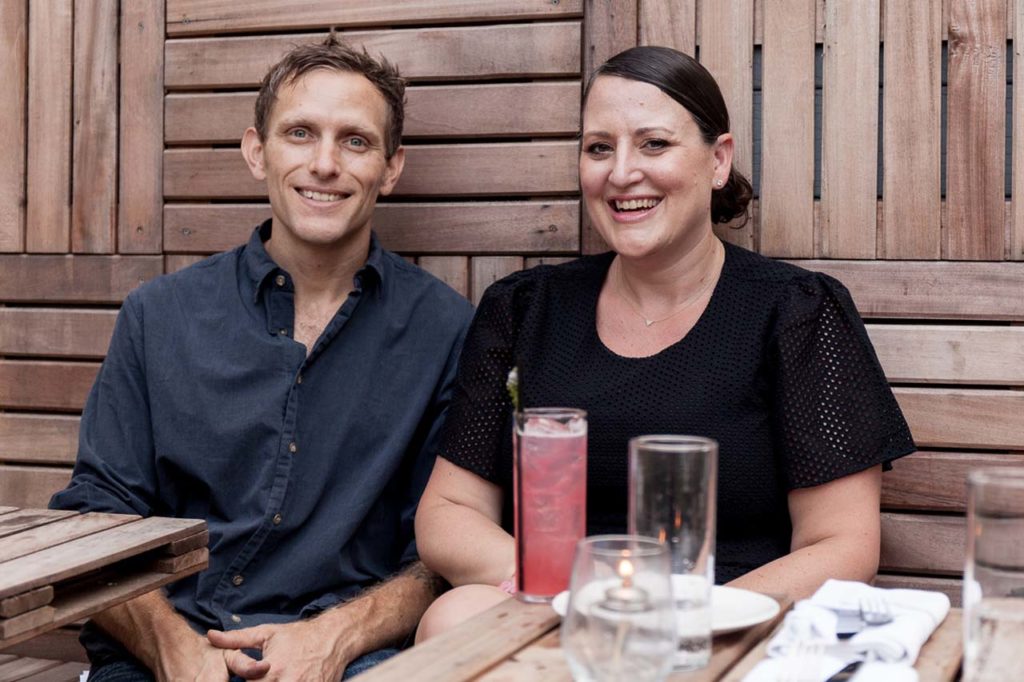
Not surprisingly, then, for husband-and-wife architects David Stockwell and Carla Swickerath of the Manhattan firm Studio Libeskind, the chance to not only own a new restaurant but also design it personally had some serious juice—the expansive outdoor space at this Vanderbilt Avenue site as one of their most passionate areas of interest. The garden, with its clean lines, pattern-contrasting woodwork, and extensive plantings and statuary, also features patches for the culinary team to grow herbs, tomatoes, figs and other items.
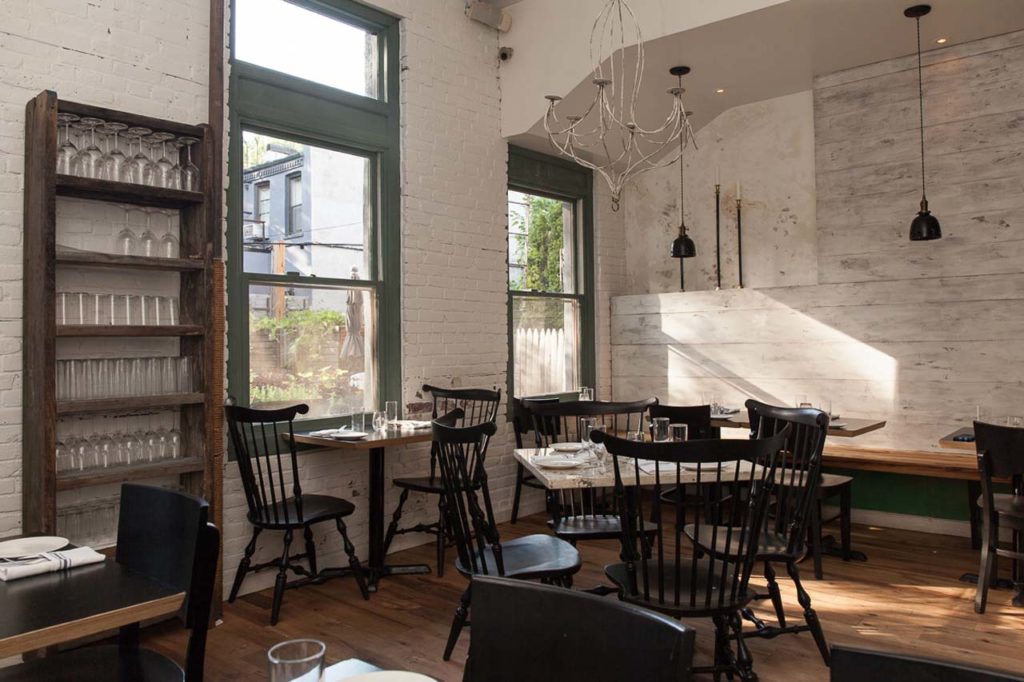
For the couple’s first venture into the restaurant world, Swickerath and Stockwell teamed with Chef Brian Leth (formerly of Vinegar Hill House and Prune) to create an Italian-with-a-twist menu—one that showcases the best ingredients of the season, to be sure, but also injects spontaneity into the proceedings, in a manner similar to what made Vinegar Hill House one of the most famed eateries in the borough. Testament to that unconventional spirit is the name Faun itself (a legendary half-human, half-goat manifestation of forest and animal spirits), which the owners explained was meant to convey “mythic playfulness,” according to a recent article in the New York Times. They also decided to become mavericky in another sense; from the first, the business was gratuity-inclusive—and paid its entire staff a living wage. It joins a growing roster of no-tip eateries, such as Roman’s in Fort Greene and Aska in Williamsburg.
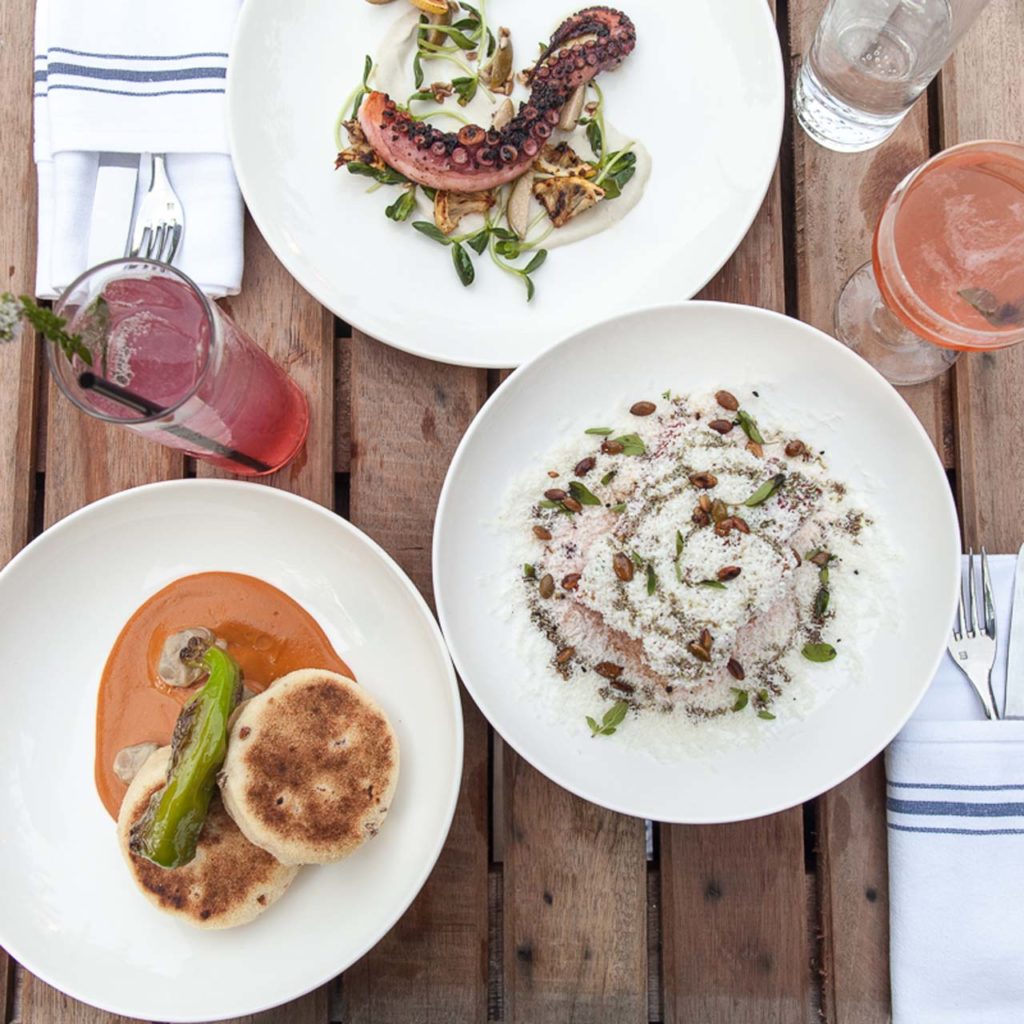
Faun’s interior is a pair of comfortable, intimate rooms separated by a semi-open kitchen and with an eight-seat bar up front. Handcrafted elements are everywhere—from the iron chandelier in the back dining room to the giant mirror frame and the sycamore bar (fashioned from a tree felled by Hurricane Sandy).
Leth’s menu changes often, sometimes daily, depending on what he sources from suppliers and the garden. Current highlights are Wagyu Tongue with uni (sea urchin), radish, and aioli; Scallops with onions, caraway, rye, and sauerkraut; and Chicken Liver Mousse with crispy chicken skin and housemade piadina bread. Pastas are made fresh in house: Bone Marrow Cappelletti in brodo bursts with flavor; Spaghetti is accompanied by chicory braised with garlic and olive oil and white beans; Cresta di Gallo, a cockscomb-shaped pasta made with squid ink in the dough, is served with squid and spinach with an extra kick from chilies; and then there’s the Spaccatelli (resembling a rolled-up scroll) with nettle pesto. Hearty mains include Boar Shank with squash, honeycomb, and pepitas; Squab with lentils, carrot, and pomegranate; and Whole Crispy Duck for four, with lavender honey, endive and buckwheat pancakes (the last dish is limited, and best reserved in advance).

Bar Manager Billy Nichols (The Finch, Vinegar Hill House) creates cocktails that highlight non-chill-filtered small batch spirits, amaros (herbal liqueurs commonly taken as after-dinner digestifs), and infusions from herbs also grown in the garden. Drinks are spirits-forward and focus on just a few ingredients. Highlights include the Badalisc with Mellow Corn whiskey, Cappelletti Aperitivo, Dolin Blanc, and lemon; the Bull of Heaven (inspired by the Brooklyn cocktail which you can read about on page 74), which marries Black Bull scotch, Amargo-Vallet, maraschino, and Dolin Dry vermouth; the Known Unknown, with gin, mezcal, Amaro Meletti, and Contratto Fernet; and The Bothan, with chamomile-infused tequila, egg, lemon, honey, and absinthe.
Faun also wields one of the city’s most inexpensive natural winelists, for which Bill Fitch (also of Vinegar Hill House) has assembled an eclectic list of small organic and biodynamic producers—many under $50 and almost none over $100 (likewise, tip-included). Spanning Europe and the United States, and with often unusual selections that encourage exploration, the list includes sparkling orange wine from Greece, a white made with the rare turbiana grape from Lombardy, Italy, and reds from the Czech Republic. On Half-Bottle Wednesdays, any can be enjoyed in those smaller amounts. Fitch has long been a proponent of sustainably-farmed, organic, and biodynamic vines, which he says simply produce better grape juice.
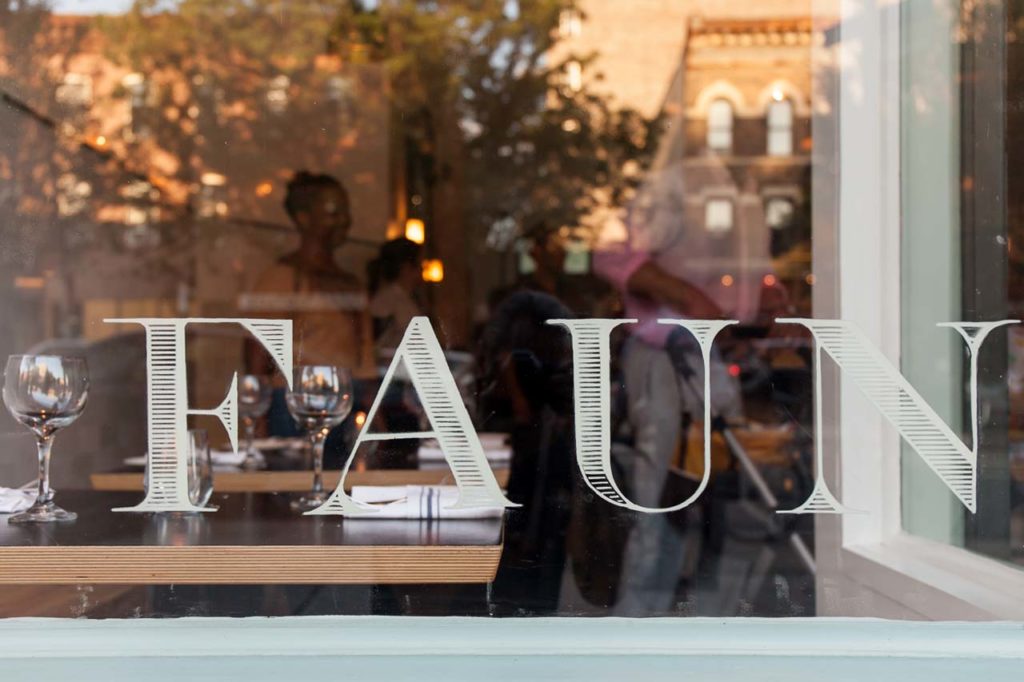
Of its policy of including gratuities in pricing, Stockwell admitted that “We are likely choosing the more difficult path, but believe strongly in doing the right thing and that there are more things right about gratuity-free than wrong.” He added that the couple felt it was important to pay a living wage to both front and back-of-house staff, and plan on sticking with the policy, despite higher payroll and payroll taxes, as well as customer perceptions of items being more expensive. “The added challenge dovetails perfectly with our overall mission of honesty and ethics, and makes this operation meaningful to us on a level far greater than simply serving delicious food.”
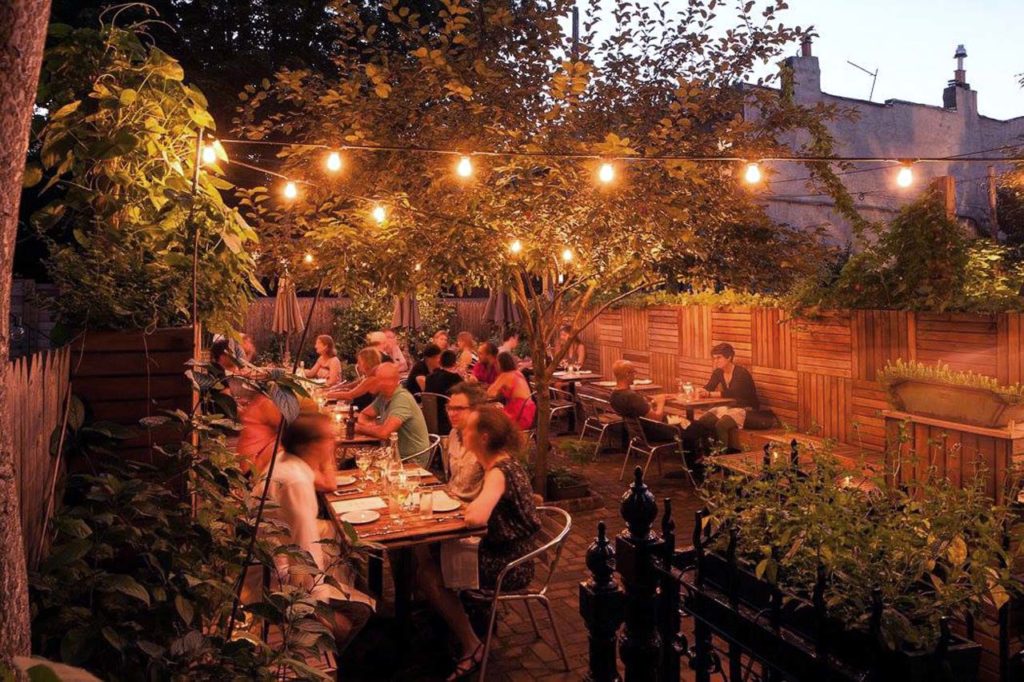
Faun
606 Vanderbilt Avenue / 718.576.6120 / faun.nyc
